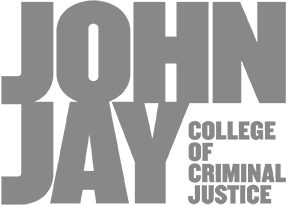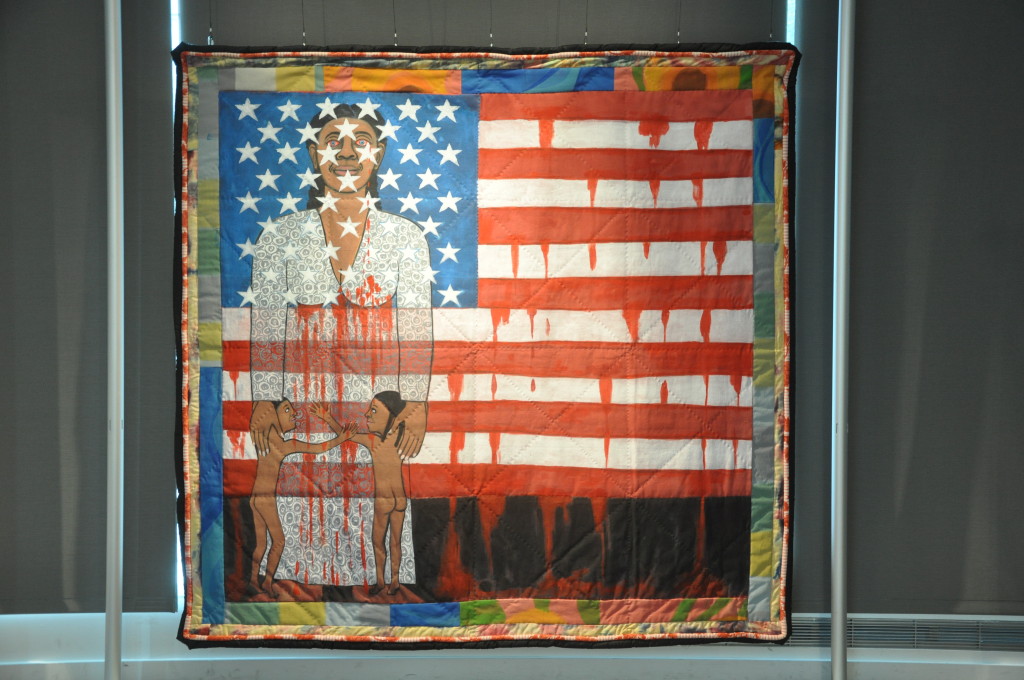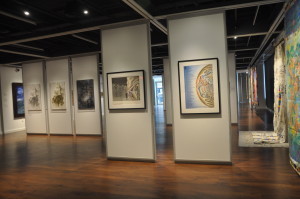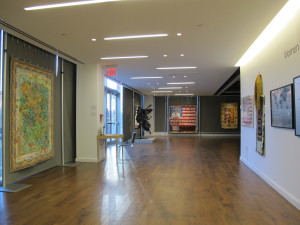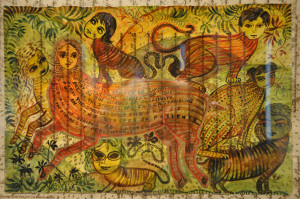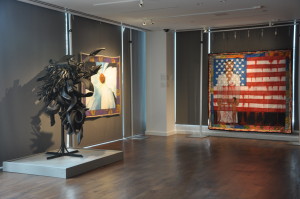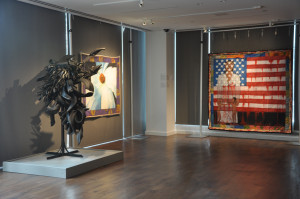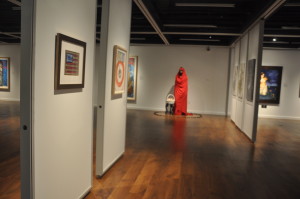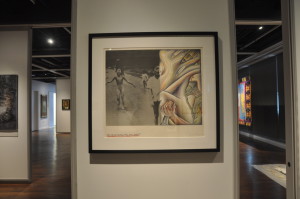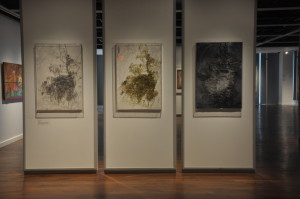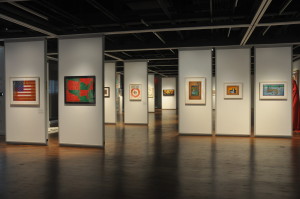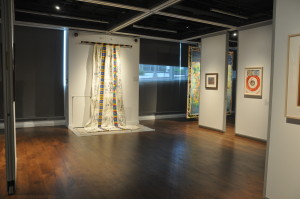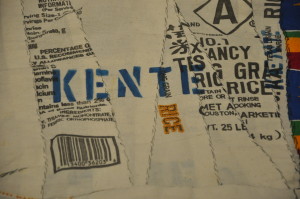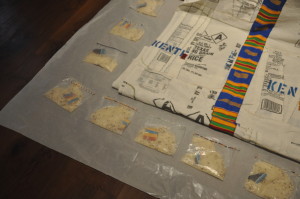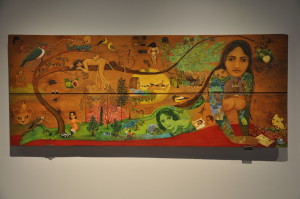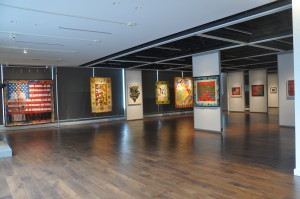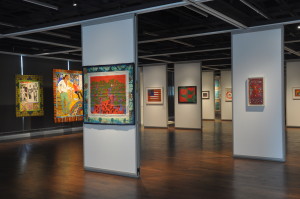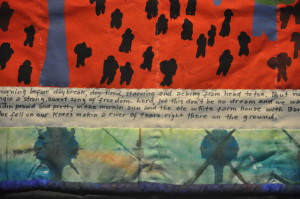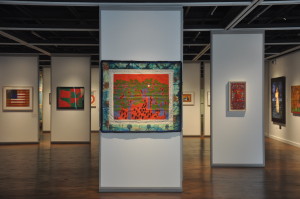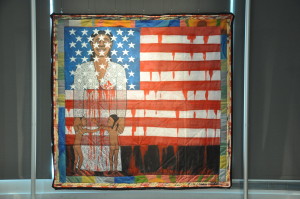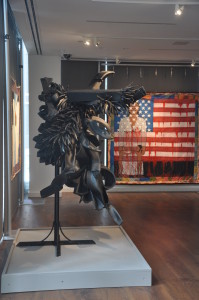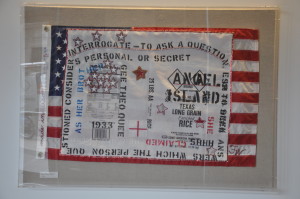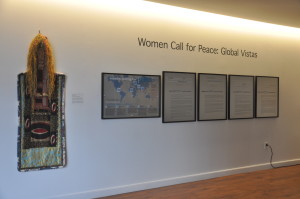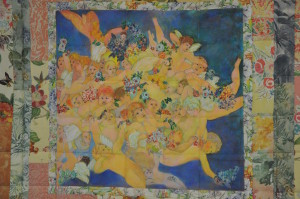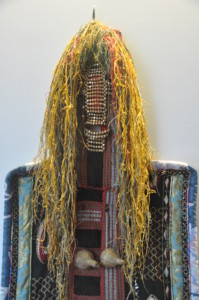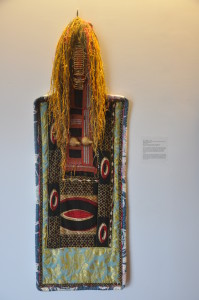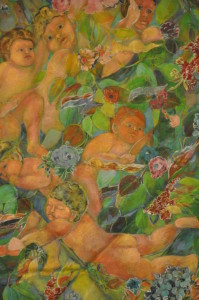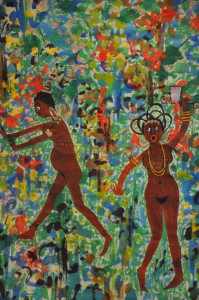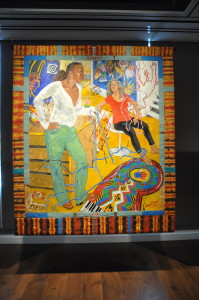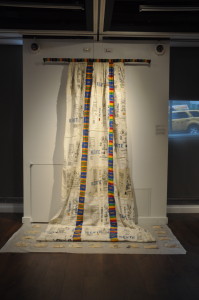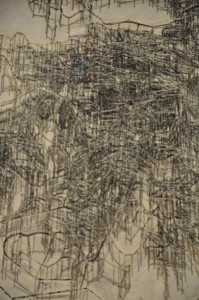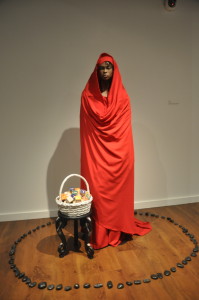On view from October 8, 2013 – December 10, 2013
The German artist and pacifist Kathe Kollwitz observed in 1944 that “Every war is answered by a new war, until everything, everything is smashed. That is why I am wholeheartedly for a radical end to this madness…Pacifism simply is not a matter of calm looking on; it is work, hard work.” The artists in “Women’s Call for Peace” embody this very idea of pacifist militancy. While women are rarely the perpetrators of war, they nonetheless suffer its devastating effects—the loss of their sons and daughters, brothers and sisters, husbands and homes.
Therefore, women must assume responsibility for ending violent human conflict; they must raise their voices against violent aggression and insist on a world that is safe for themselves and their children. These are the goals of the distinguished participants in “Women Call for Peace”—Christian, Muslin, and Jewish, Black, White, and Asian—whose art works eloquently and vehemently advocate for global peace.
As we blaze forward into the 21st Century, we appear to have taken with us our most hoary human vice—an unrelenting proclivity for violence. This penchant has never been more patent than in the decade since 9/11, during which war and terrorism have become calculable facts of life. Terrorist violence in the first month of 2010 alone occurred in Denmark, Pakistan, Afghanistan, Iraq, Russia, India, Egypt, Northern Ireland, Angola, Greece, Iraq, Thailand, Jordan, France, Sri Lanka, Philippines, Abkhazia, and Columbia—and this is in a mere 30-day period. National violence is no less ubiquitous. The past two years have born witness to wars and insurgencies in Cambodia, Chad, The Congo, Darfur, Ethiopia, Gaza, Ingushetia, Iraq, Niger, Nigeria, Pakistan, Russia, Somalia, Sudan, Thailand, and Yemen; and the drug wars in Mexico—the list is woeful and mounting. Furthering the trend is the fact that war is big business and, as such, provides a frightening incentive for the its own perpetuation. Worldwide military spending is above 1.2 trillion dollars annually; while the entire peace keeping budget of the United Nations is only a small fraction of that amount.
Inveighing against the interminable violence that mars human progress, the artists in “Women’s Call for Peace” have come together to do exactly that—call for peace. Through compelling visual statements, they implore us to grasp the futility of brutality as a modus operandi for resolving differences. The art works featured in this show are formidable in their avowals against conflict of all kinds—in large part due to the fact that many of the women in the exhibit have first-hand knowledge of the desolation caused by violent behavior. The works in this exhibit address three broadly defined themes or causes of global disharmony: war and peace; race and gender; and religious conflict. These works of art lay bare and denounce the human vices of violence and bigotry in all their many forms. As Kollwitz declared so empirically, pacifism “is work, hard work.” The sculptures, paintings, and prints in “Women Call for Peace” are not only beautiful, intriguing, rigorously designed, and iconographically complex, they are fervent incarnations of the hard work of Peace.
The fifty three works in the exhibition—paintings, sculptures and prints—offer stunningly beautiful but powerful statements of the artists’ commitment to peace on all fronts—personal, political, domestic, and international. Artists in the exhibition are Emma Amos, Marcia Annenberg, Siona Benjamin, Chakaia Booker, Nanette Carter, Judy Chicago, Linda Freeman, Susanne Kessler, Leila Kubba, Grace Matthews, Renee Magnanti, Irene Hardwicke Olivieri, Faith Ringgold, Aminah Robinson, Flo Oy Wong, and Helen Zughaib.
Women Call for Peace is curated by Lisa E. Farrington, Ph.D., Professor and Founding Chair of the Department of Art and Music at John Jay College of Criminal Justice, City University of New York. She wrote the prizewinning text book Creating Their Own Image: The History of African-American Women Artists. (Oxford University Press, 2005) and has been the William & Camille Cosby Endowed Scholar at Atlantic University/Spelman College (2008 – 2007). The exhibition is toured by ExhibitsUSA, a national program of Mid-America Arts Alliance. ExhibitsUSA sends more than 25 exhibitions on tour to more than 100 small- and mid-sized communities every year. Mid-America is the oldest nonprofit regional arts organization in the United States. More information is available at www.maaa.org and www.eusa.org.
